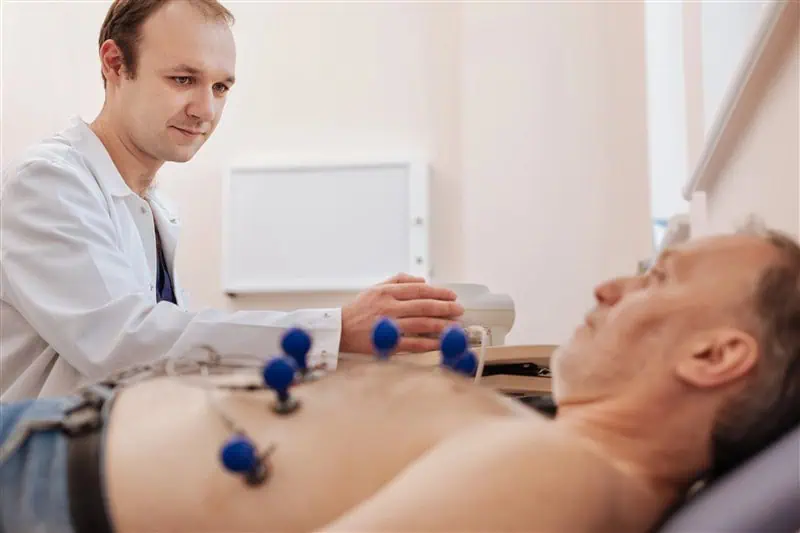
Issue 5/2025
Kitov1, S., Kitova2, M., Nonchev3, B., Krasteva4, V., Kitova1, L.
1 St. George University Hospital, Cardiology Clinic, Faculty of Medicine, Medical University – Plovdiv
2 Student, 4th year Medical University – Plovdiv
3 Clinic of Endocrinology and Metabolic Diseases, Kaspela University Hospital, Medical University – Plovdiv
4 Institute of Biophysics and Biomedical Engineering – Bulgarian Academy of
Science, Section: Processes and Analysis of Biomedical Signals – Sofia
The etiopathogenetic mechanisms in metabolic syndrome that affect cardiac electrophysiology and lead to myocardial remodeling are numerous. Despite the progress of our knowledge and the multitude of modern imaging methods, the electrocardiogram has been and continues to be considered one of the main screening methods that can provide useful information for assessing arrhythmogenicity in different types of patients. The Tpeak-to-Tend (Tp-e) interval has been described as a marker of arrhythmogenic load, which is more sensitive than the standard QT-interval.
The aim is to study the electrocardiographic proarrhythmogenic marker Tpeak-end interval in newly diagnosed metabolic syndrome. Material and methods: A group of 71 patients with newly diagnosed metabolic syndrome aged 35-55 years and without concomitant coronary artery disease was formed. A 48-hour Holter ECG recording was performed in all patients to assess the arrhythmogenic load and exclude „silent ischemia“. Based on this, they were divided into two groups – with high arrhythmogenic load – 33 patients (46.5%) (includes supraventricular or ventricular tachycardia, atrial fibrillation/flutter, ventricular extrasystoles over 10%, frequent supraventricular extrasystoles over 500/24 hours) and with low arrhythmogenic load – 38 patients (53.5%) (includes without significant rhythm disturbances). The electrocardiographic intervals studied between the two groups show a statistically significant difference for the Tr-e interval. The prolongation of the Tr-e interval in the group with high arrhythmogenicity can be explained by the globally induced proarrhythmogenic phenotype of myocytes, due to the effect of IL-6 and TNF-α and prolongation of myocardial repolarization. When choosing optimal sensitivity and specificity for the Tpe interval, a duration of 54.50 msec is established as the limit above which arrhythmogenicity increases in patients with metabolic syndrome. Conclusion: From a clinical perspective, this is important for screening patients at high risk of atrial tachycardias, of which atrial fibrillation is of particular importance given the increased thromboembolic risk.
Address for correspondence:
S. Kitov
Medical University, Plovdiv, St. Georgy University
Hospital, Cardiology Clinic
15A, „Vasil Aprilov“, Blvd.
4000, Plovdiv
